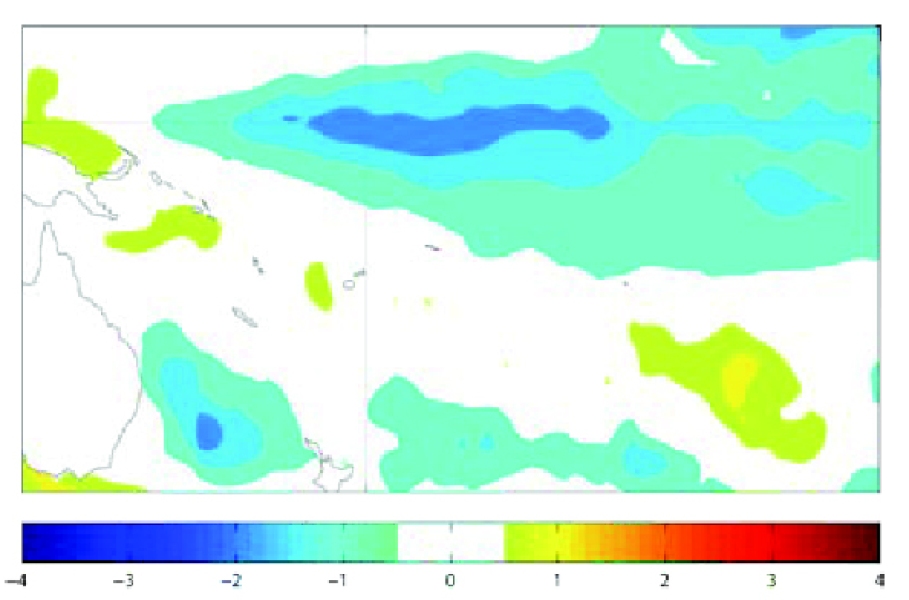T he tropical Pacific is currently in moderate La Niña conditions, and the ocean now appears to be fully coupled with the tropical atmosphere. The SOI eased to +1.0 in January (+2.3 in December), while the TRMM ENSO index was near-constant at –1.5 (–1.7 in December).
Enhanced convection existed across northern Australia and a southwards-displaced SPCZ was positioned over Vanuatu and Fiji. SST anomalies strengthened, especially over the central equatorial Pacific:, and NINO4 was –1.2°C in January, from –0.9°C in December, and NINO3.4 is now –1.1°C, up from 0.8°C in Nov–Dec.
Sub–surface sea temperature/heat content anomalies (both negative and positive) intensified in January, suggesting another month or so of peak intensity before La Niña eases towards neutral.
An MJO pulse is presently developing and is predicted to intensify and propagate into the western Pacific in early February, bringing enhanced convection over the western tropical Pacific. Such a pattern would work against the La Niña–related enhanced Walker circulation, and may act to weaken La Niña while increasing activity in the SPCZ.
Most of the dynamical models NIWA monitor predict La Niña conditions through to April. All of the dynamical models weaken conditions through into MJJ 2012, with most predicting neutral conditions and one developing a warm El Niño state. Statistical models follow a similar trend. The latest IRI technical summary of global guidance suggest a 77% chance of La Niña through April, with a 23% chance of neutral conditions. The NCEP ENSO discussion of 5 January 2012 indicates that a weak to moderate La Niña should continue through February, then dissipate during March–May.

